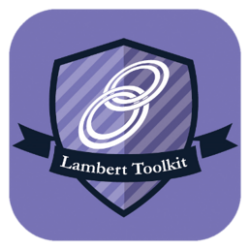Degree Apprenticeships Toolkit
We’ve pulled together a list of FAQs regarding degree and higher apprenticeships.
The main difference for HE providers is that funding for apprenticeships in England is managed by the Skills Funding Agency rather than HEFCE – with very different processes and requirements
There is also an HE specific funding guide [Apprenticeship funding and performance-management rules for training providers, May 2017 to March 2018] available at
Crucially, it is an expectation of any Apprenticeship that the employer rather than Apprentice/Student pays any costs. Universities cannot charge student fees for Apprenticeship provision, and these programmes are ineligible for Student Loan support
The funding for apprenticeships has two main components – A contribution from Government and an employer contribution (of at least 1/3rd of total cost). Going forwards, the employer contribution may be drawn from a mandatory employer apprenticeship levy described subsequently.
Additionally, the Government has provided (via HEFCE) funding for the development of the educational components of new degree apprenticeships by HE providers. An initial tranche of £8M was announced for 2016-17 with further funding likely to be available for future years.
Part of the process for approval of an apprenticeship under the new standards is that the government (via SFA) agrees the maximum rate which it is prepared to contribute to delivery. This is done by allocating the apprenticeship to a series of funding bands which set a cap on the total amount of funding that can be claimed ( via Government and/or employer Levy pot). This covers the full costs of delivering the apprenticeship training and NOT just any educational qualification component. These currently range from £3000 to a maximum of £27,000 of which the maximum government contribution is 2/3rds of the costs
There is nothing in principle to stop an HEI charging an employer a higher level of fee than that agreed in the Apprentice Standard – but the full additional cost would then be borne by the employer. In practise, this is becoming a cost competitive market and employers are increasingly shopping around to find the best deal they can get – in contracting with education providers to deliver the education elements of their Apprenticeship Programmes. The cost cap in the Apprenticeship standard covers the full apprenticeship programme including any training elements delivered by the employer, so employers may have an incentive to drive the rate charged to HE providers to below the maximum allowed level. It is probable that the FE sector might enter this market at lower rates than universities can offer and the government would welcome a competitive market place of this sort. The longevity of any contract might therefore be an important consideration when deciding whether to develop degree apprenticeship provision.
Any views, thoughts, and opinions expressed herein are solely that of the author(s) and do not necessarily reflect the views, opinions, policies, or position of the Engineering Professors’ Council or the Toolkit sponsors and supporters.
 The IPO has provided us with a guide to patents, trade marks, copyright or design: how intellectual property applies to the work of engineering academics.
The IPO has provided us with a guide to patents, trade marks, copyright or design: how intellectual property applies to the work of engineering academics. The IPO has provided us with a guide to patents, trade marks, copyright or design: how intellectual property applies to the work of engineering academics.
The IPO has provided us with a guide to patents, trade marks, copyright or design: how intellectual property applies to the work of engineering academics. The IPO has provided us with a guide to patents, trade marks, copyright or design: how intellectual property applies to the work of engineering academics.
The IPO has provided us with a guide to patents, trade marks, copyright or design: how intellectual property applies to the work of engineering academics. The IPO has provided us with a guide to patents, trade marks, copyright or design: how intellectual property applies to the work of engineering academics.
The IPO has provided us with a guide to patents, trade marks, copyright or design: how intellectual property applies to the work of engineering academics.